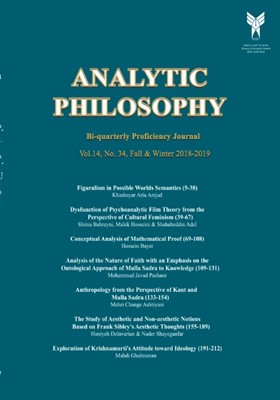-
-
List of Articles
-
Open Access Article
1 - Figuralism in Possible Worlds Semantics
-
Open Access Article
2 - Dysfunction of Psychoanalytic Film Theory from the Perspective of Cultural Feminism
-
Open Access Article
3 - Conceptual Analysis of Mathematical Proof
-
Open Access Article
4 - Analysis of the Nature of Faith with an Emphasis on the Ontological Approach of Mulla Sadra to Knowledge
-
Open Access Article
5 - Anthropology from the Perspective of Kant and Mulla Sadra
-
Open Access Article
6 - The Study of Aesthetic and Non-aesthetic Notions Based on Frank Sibley’s Aesthetic Thoughts
-
Open Access Article
7 - Exploration of Krishnamurti's Attitude toward Ideology
-
The rights to this website are owned by the Raimag Press Management System.
Copyright © 2021-2025







